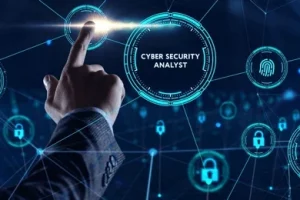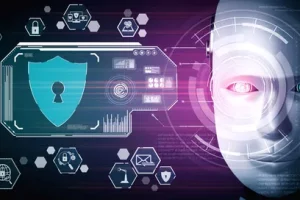How Powerful is Threat Intelligence in Cybersecurity
- Posted by 3.0 University
- Categories Cyber Security
- Date August 21, 2024
- Comments 0 comment
The unequalled concentration and astuteness of Threat Intelligence is yet to be explored in entirety.
Especially given the scenario that the Cybersecurity landscape has been constantly and dynamically changing. And of course, ostensibly, becoming more sophisticated with frequent cyber threats. Besides, companies are eager to find innovative strategies to protect their data and keep it safe.
Threat Intelligence is one such strategy that has proven to be extremely successful. However, the question is: what is Threat Intelligence, and how does it contribute to modern security?
This article focuses on the term, explaining it, its main points, and its role in supporting organizations’ cyber resilience.
Understanding Threat Intelligence
Threat Intelligence, TI for short, is not just about gathering data. It is the utilization of clever and advanced algorithms and tools to derive useful information in order to tackle existing and emerging issues. These understandings aid in risk shielding for organizations and help them transition from a reactive to a proactive cyber-guarding posture.
The Importance of Threat Intelligence
Developing a reliable TI framework is the main tool that fights against a myriad of cyber menaces within an organization.
TI provides surveillance, enabling a company to anticipate threats and prepare for them, rather than solely addressing the damage that has already occurred. This anticipatory power is an essential component of the new age of digital security.
Different Types of Threat Intelligence
Admittedly, the layers of information are of 3 different types, viz. strategic, tactical, and operational, which tell the complete story. The TI landscape has four main categories: of these, the first one is indeed the strategic TI. This type of Threat Intelligence (TI) aims to engage top managers in the company’s security by providing a comprehensive overview of potential threats and long-term trends.
The remaining three types of TI are operational, tactical, and technical, all interrelated and building on each other. The second level of TI is normally under the security team and is described as the tactical TI which explores deep into a threat actor’s actions, methods, or precisely put, tactics, techniques and procedures (TTPs) and supports the mitigation of the stated risks through the development of immediate defence strategies.
They ensure the safety of organizations by generating and implementing the appropriate protocols based on their requirements.
Tech-based TI shows how the company can stop the intruders by passing on the necessary information about attackers and relevant preventive measures.
It implies identifying the aforementioned vulnerabilities within the software and the information that they pose. Operational TI, extensively known as hidden TI, is portrayed as the most robust TI, which gives a deep dive into the nature, intention, and application of attacks. Of course, sources like hacker chat rooms, which are not always reliable, provide a large portion of the data.
The Role of a Cyber Threat Intelligence Analysts
The analysts work behind the scenes, serving as cybersecurity protectors. They are in charge of keeping an eye on outside cyber threat data and conducting the necessary analysis to deliver the actionable intelligence that will help the companies narrow the gap with their cyber adversaries.
To this end, they are involved in three main activities, including triaging data from multiple sources, pattern recognition, and reporting out clear actionable intelligence to steer security-related decision-making.
Building a Cyber Threat Intelligence Program
The definition of a cyber threat intelligence program shall leverage threat intelligence for the best and brightest students. The program gathers threat intelligence from various sources into one unified inflow, which in turn allows for consistent evaluation and classification of cyber threat events.
This enables improved threat analysis and increased information sharing throughout the organization.
Challenges in Gathering Operational Threat Intelligence
Operations are the ones that are most concerned about the infamous operational TI being gathered, thanks to the difficulty of the process involved. They typically communicate via private or encrypted channels, which restrict access to data.
Furthermore, the interpretation of their often ambiguous and even coded language can pose significant challenges for the individuals performing the task.
Let’s not forget about the barriers to operational TI, which are still vital for understanding the details of cyberspace.
Integrating Threat Intelligence with Organizational Security
Companies that integrate threat intelligence data into their operational security frameworks may enhance cybersecurity.
This transition involves basing the TI knowledge on security operations, incident response strategies, and overall risk management processes.
The Future of Threat Intelligence
We must also come up with a way of dealing with the constant evolution of cyber threats.
AI and ML development inseparably contribute to the development of TI, improving the automatic recognition and analysis of threats through increased precision and speed.
To sum it up,
In a digital world fraught with threats, threat intelligence becomes the light of salvation for businesses seeking to secure their property. TI is a prescient means of not only detecting but also thwarting an attack. It is more than just software; it is an important part of the new era of cybersecurity.
Incorporating the strategy will boost organizational creativity and move them from paranoia to responsible offence, thereby making them more dynamic in light of the rapid changes in the threat landscape.
Await our next piece, in continuation, to discover how to implement Cyber Threat Intelligence.
If you’re looking for an Ethical Hacking Course or intend to learn about Threat Intelligence or a Cybersecurity online certification course, register now at 3.0 University.
You may also like

How to Become a SOC Analyst?

How to protect seniors from online scams?

